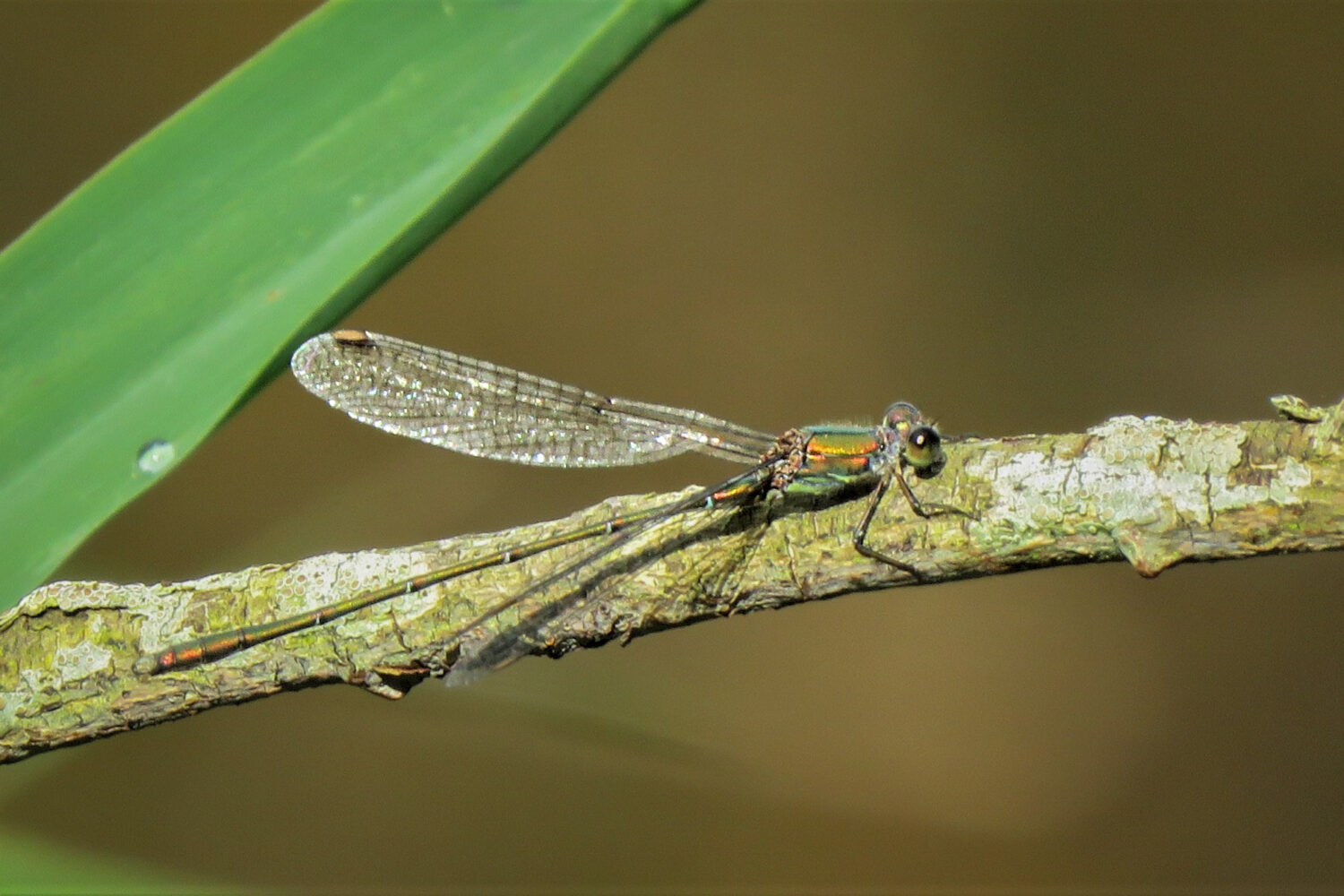Enjoy a closer look at the late season dragonflies you could encounter at Gosforth Nature Reserve in a new blog by local naturalist and volunteer, Christopher Wren.
August is the peak flight time for our late season dragonflies. Hawkers and darters are on the wing while chasers, skimmers and emperors are near the end of their flight period. We have recorded four species of hawker and three species of darter in Gosforth Nature Reserve so these are the ones to look out for now.
Southern Hawker
This is our most colourful large dragonfly and males on patrol are often quite curious and approach closely to give a good view. Both sexes have broad “shoulder stripes” and coloured bands across the last two abdominal segments (all other hawkers have paired coloured dots). The male is chocolate brown, lime green and sky blue.
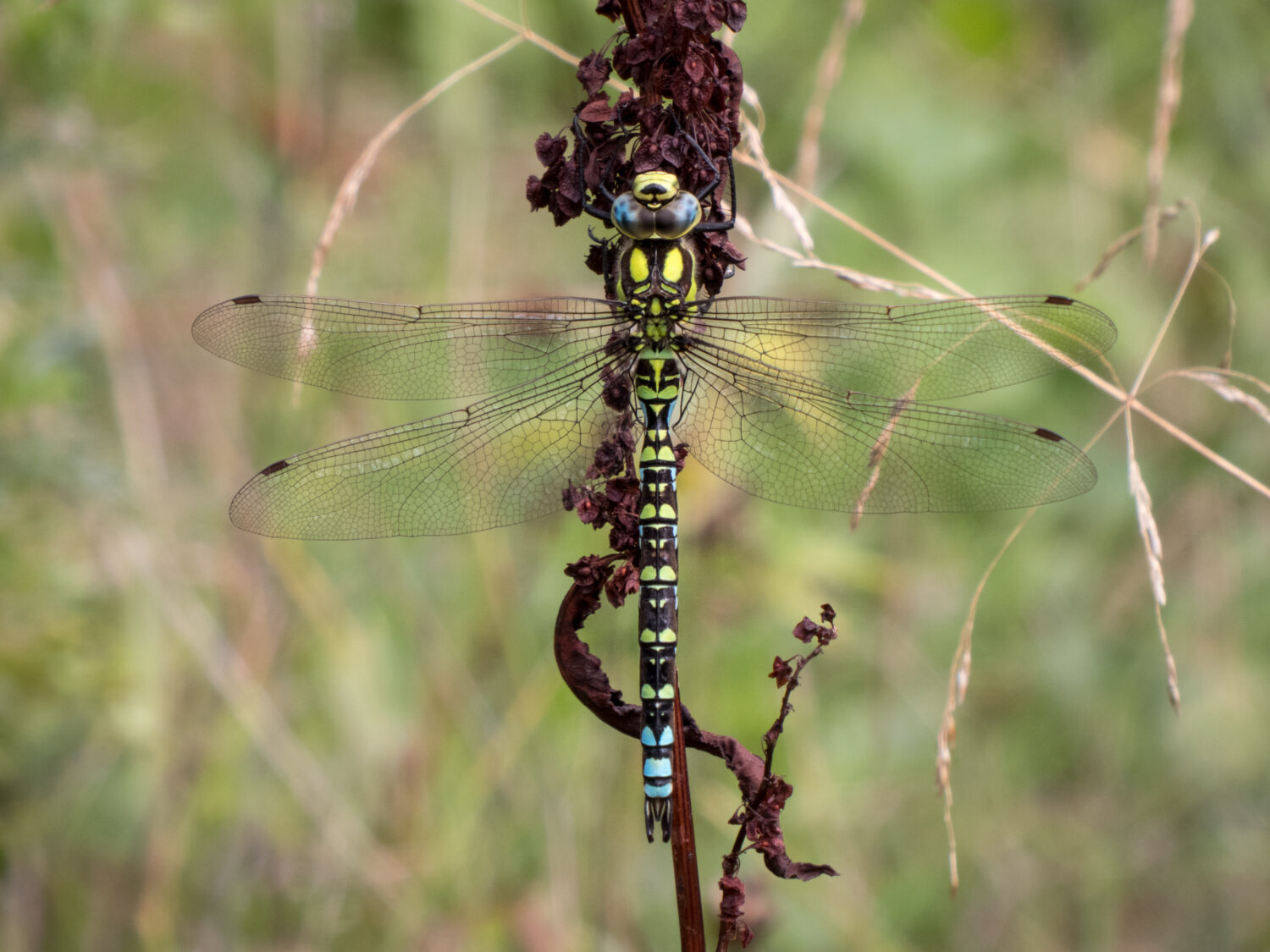
The female is green and brown and usually lays her eggs in moss at the water’s edge or on overhanging structures.
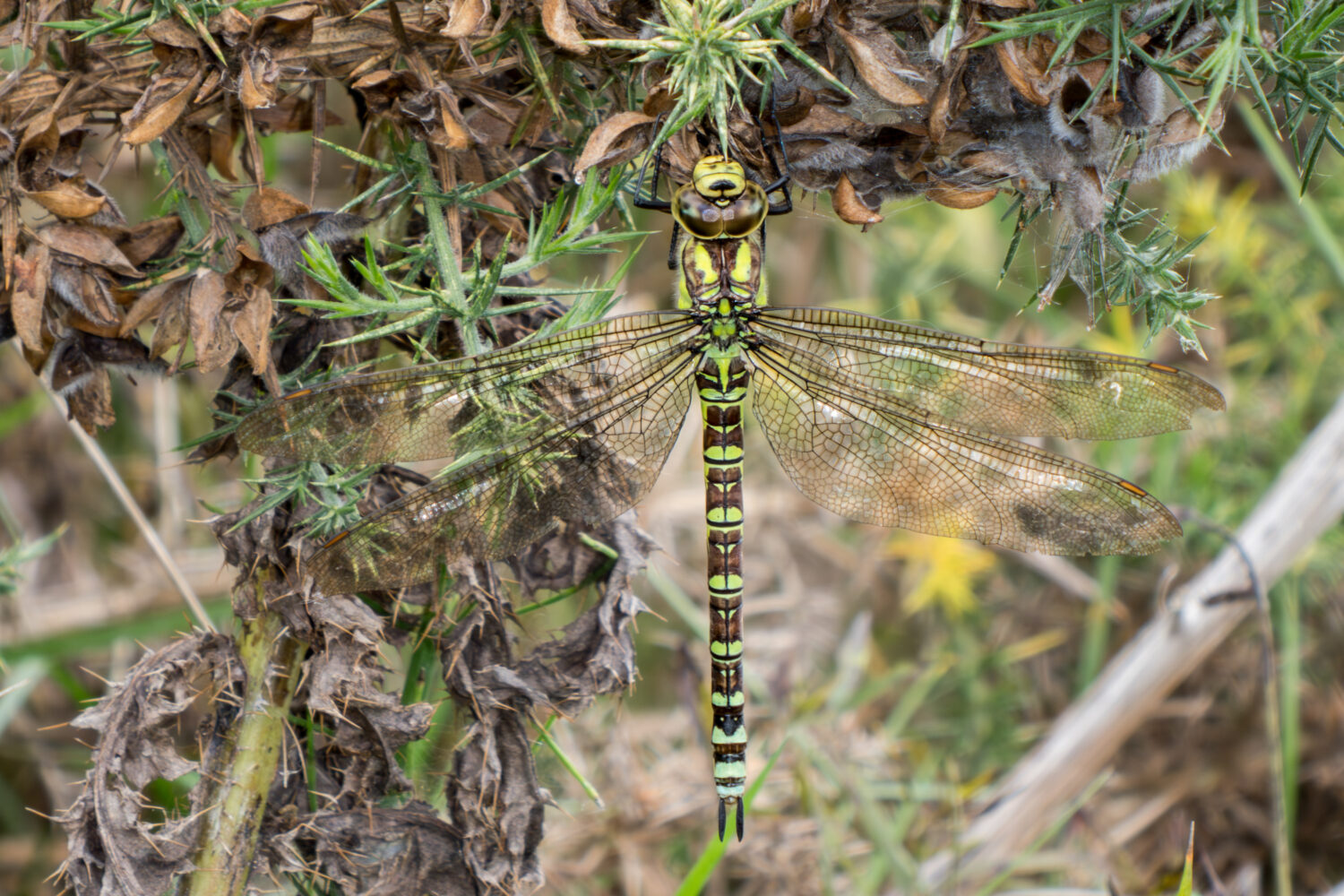
Common Hawker
The Common Hawker isn’t common and is perhaps better described by its other name of Moorland Hawker. It was first recorded in the reserve in 2020 and has been present in low numbers each year since. Both sexes have a gold costa (leading edge of the wing). Males look dark when flying.
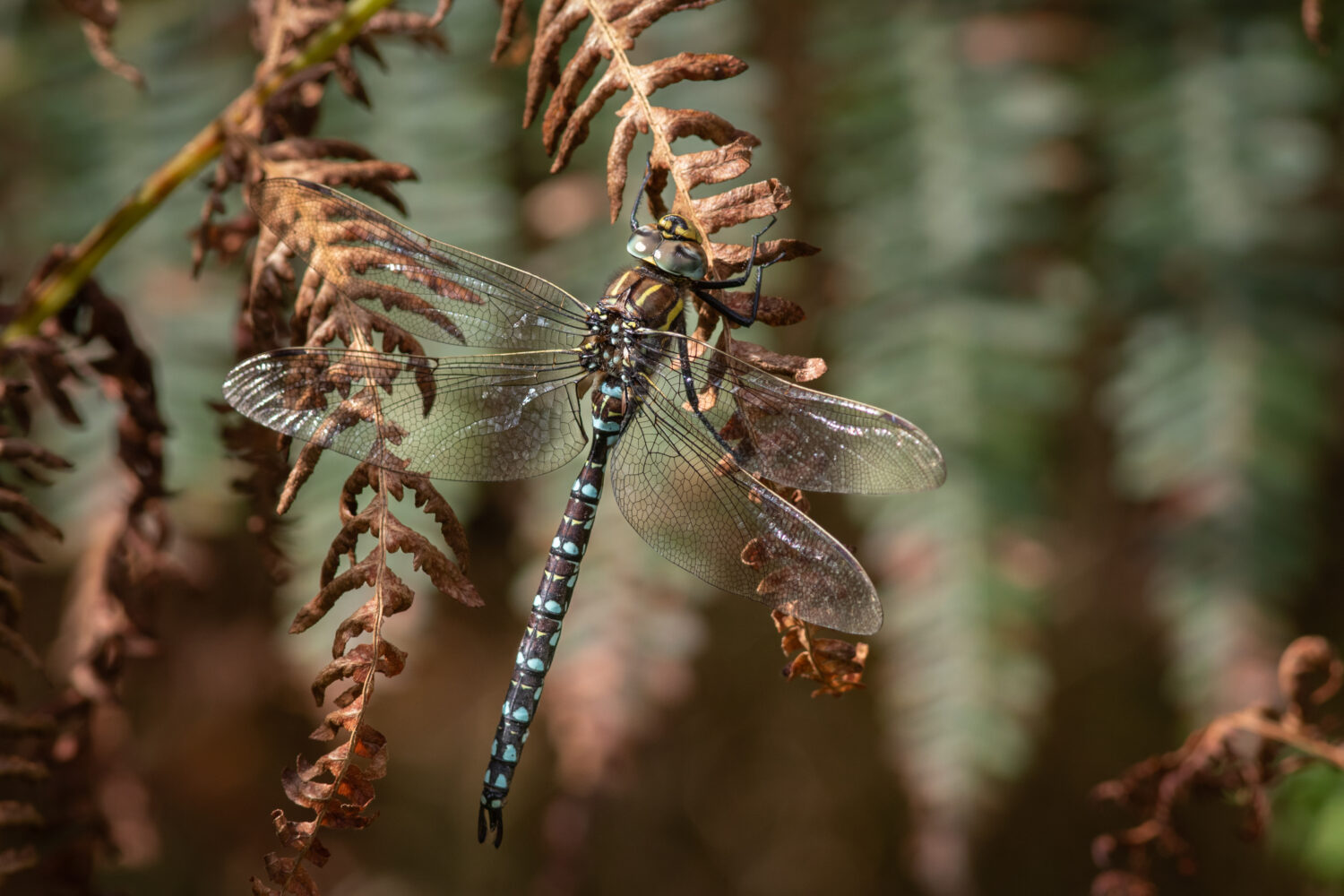
Females are brown and yellow and lay their eggs in vegetation at the water’s edge.
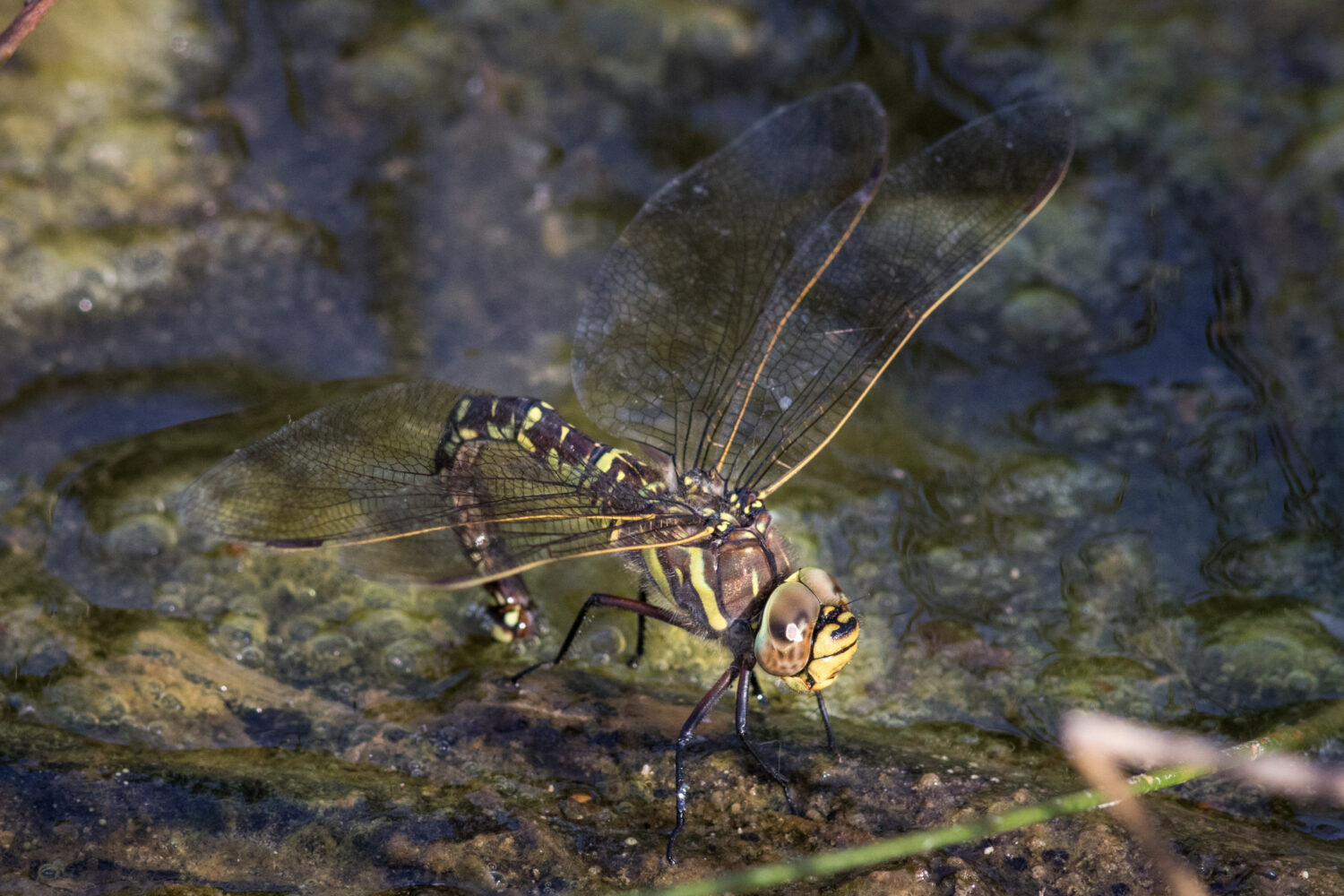
Migrant Hawker
Our most numerous hawker dragonfly, the Migrant Hawker is not a migrant and is also known as the Autumn Hawker. It appears in August and flies well into autumn. Smaller than the two above, the male is blue and brown.
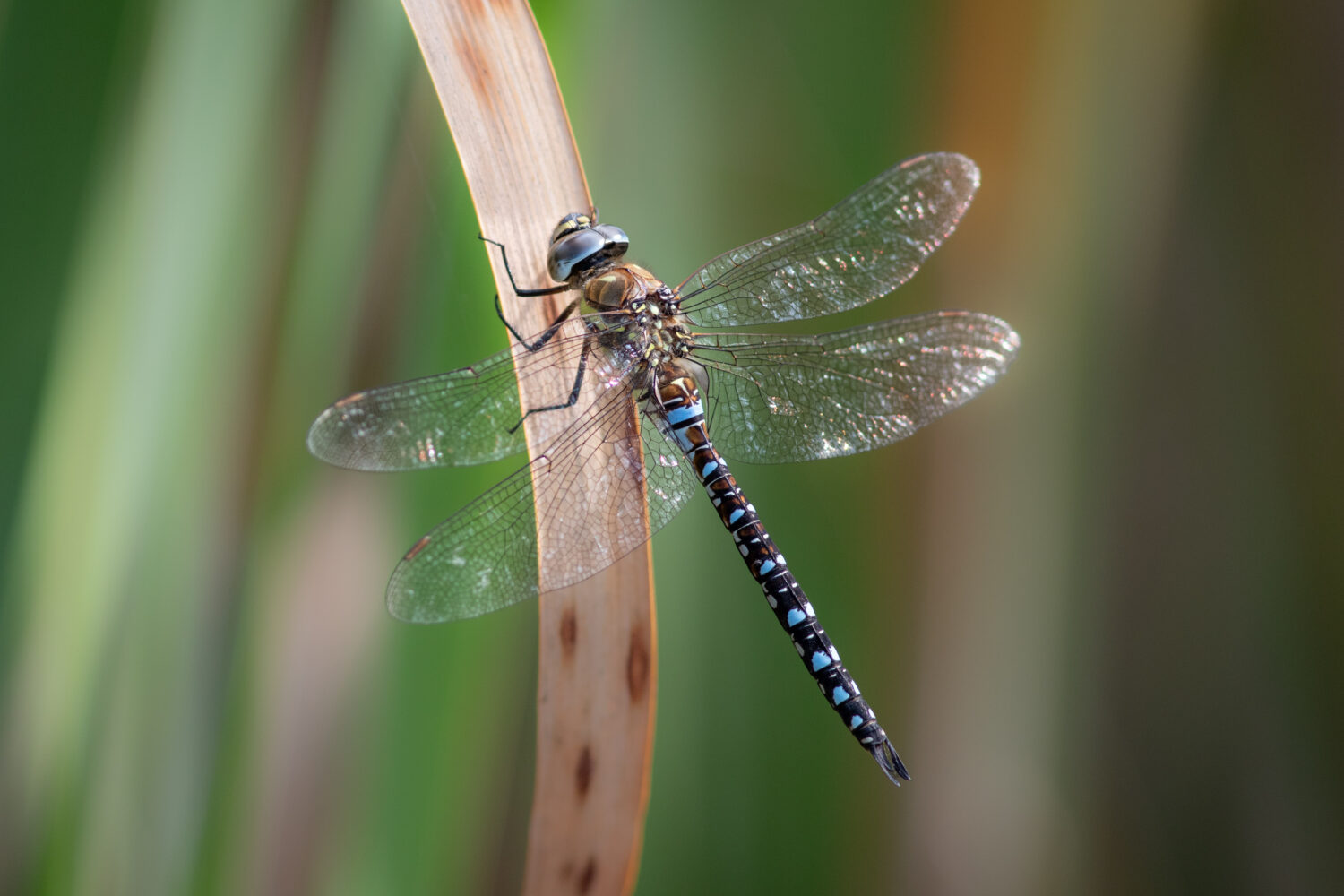
The female is brown and yellow. Both sexes have a characteristic “golf tee” mark at the base of the abdomen.
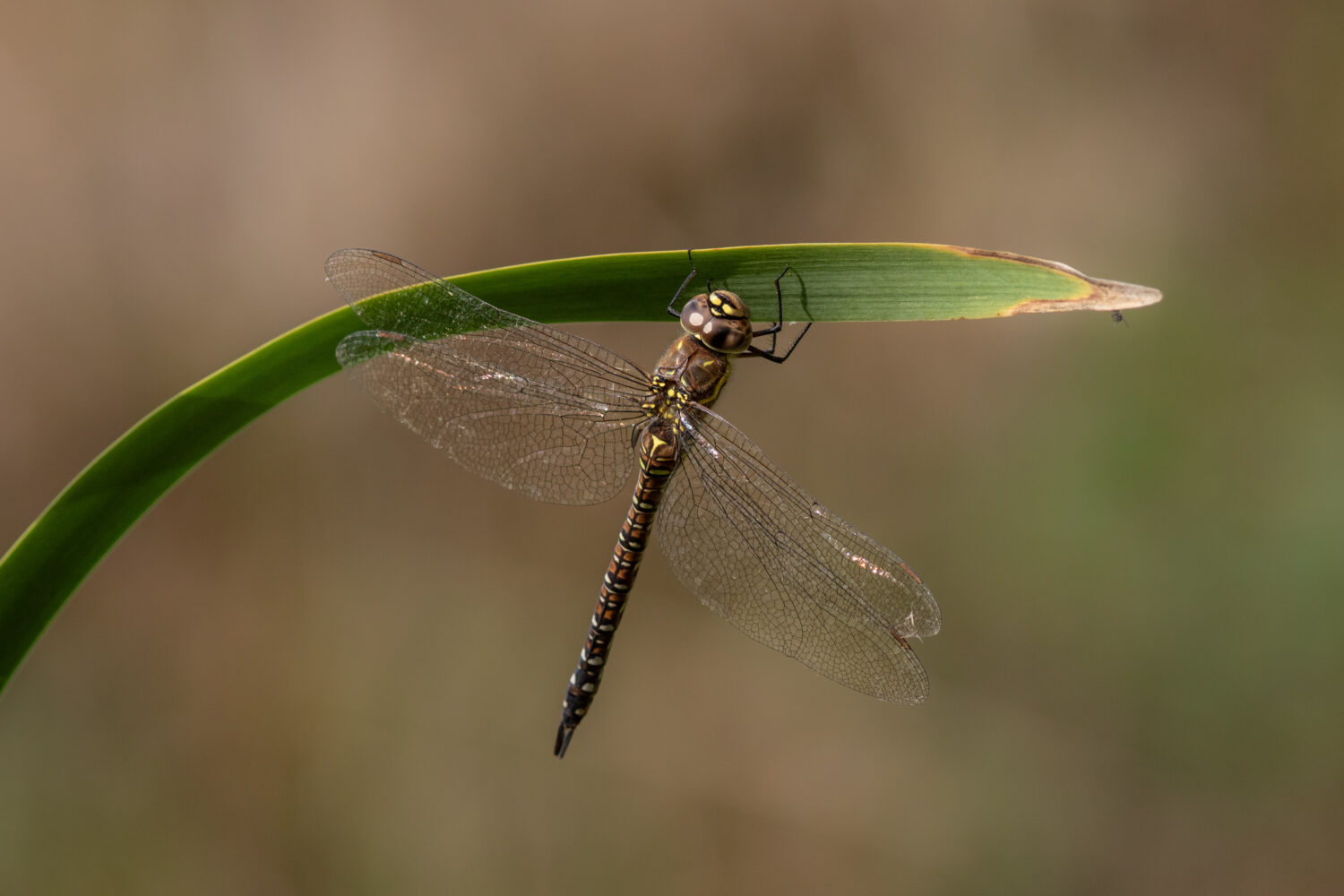
Brown Hawker
A male Brown Hawker has been recorded once in the reserve, in September 2021. It is a common enough species farther south but rare this far north.
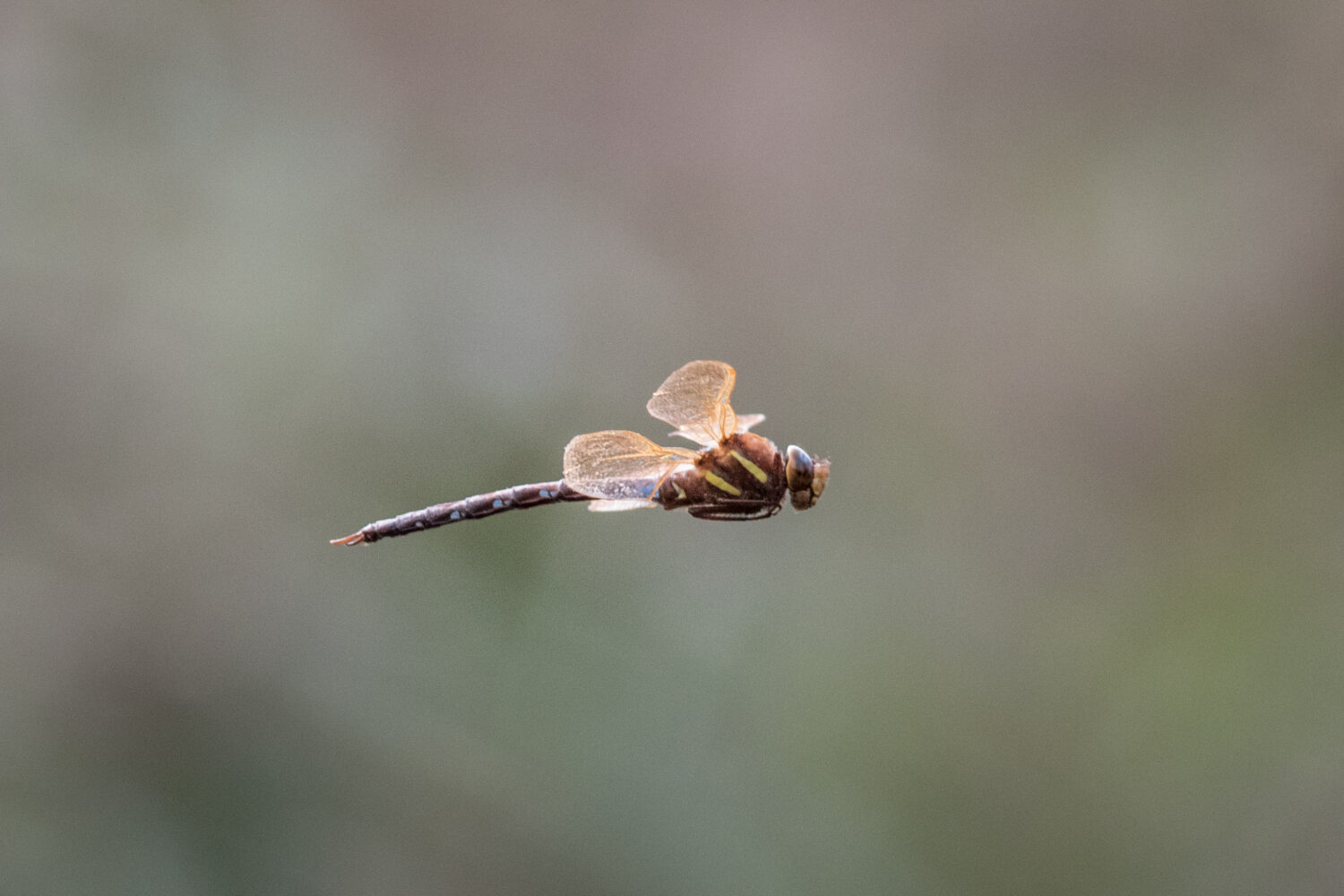
Common Darter
This is our most numerous dragonfly with a long flight period from June to October. Both sexes are yellow after emerging and both have yellow lines along their black legs. Males turn red as they mature. This is a male.
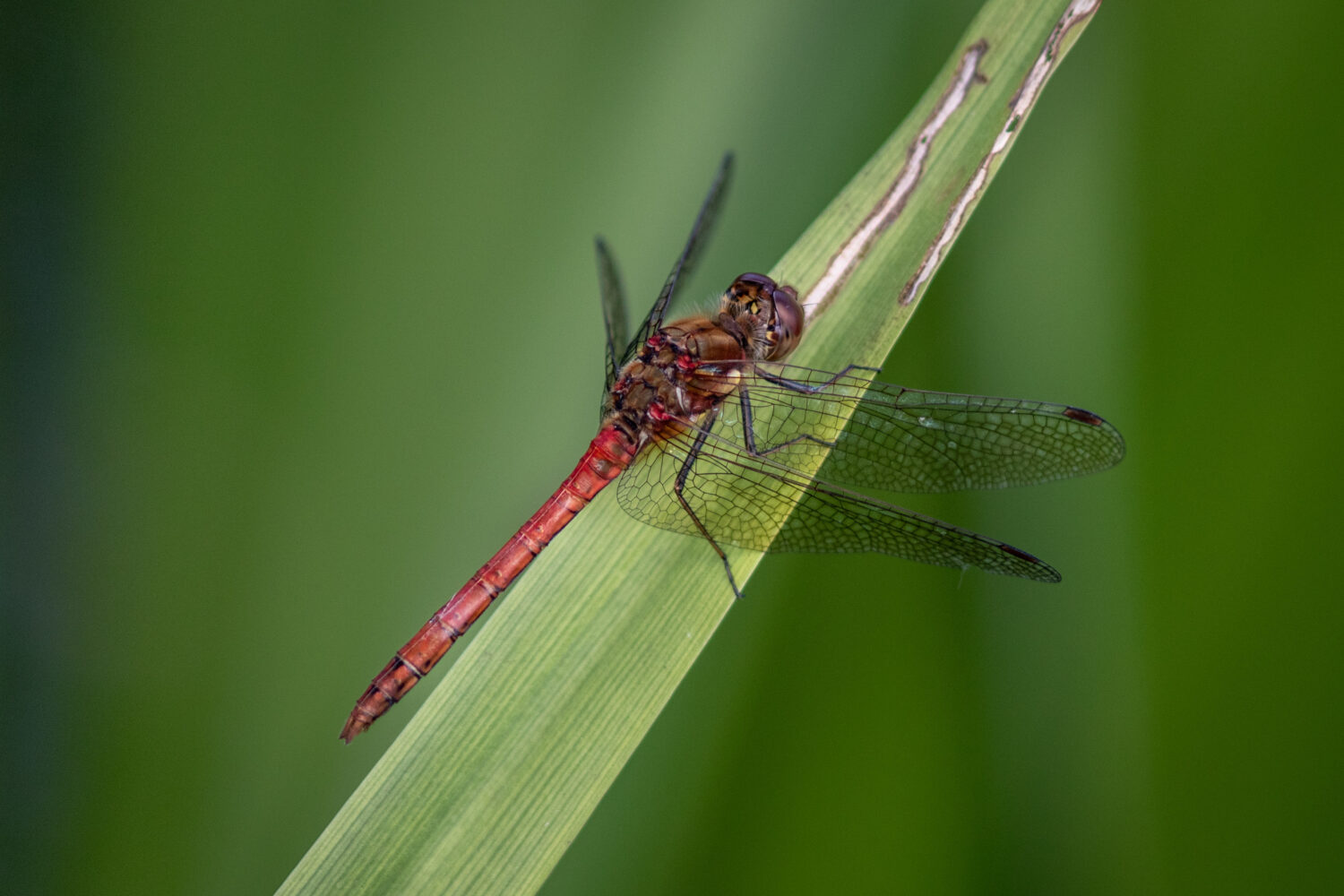
Females gradually darken to a light grey / brown. This is a female.
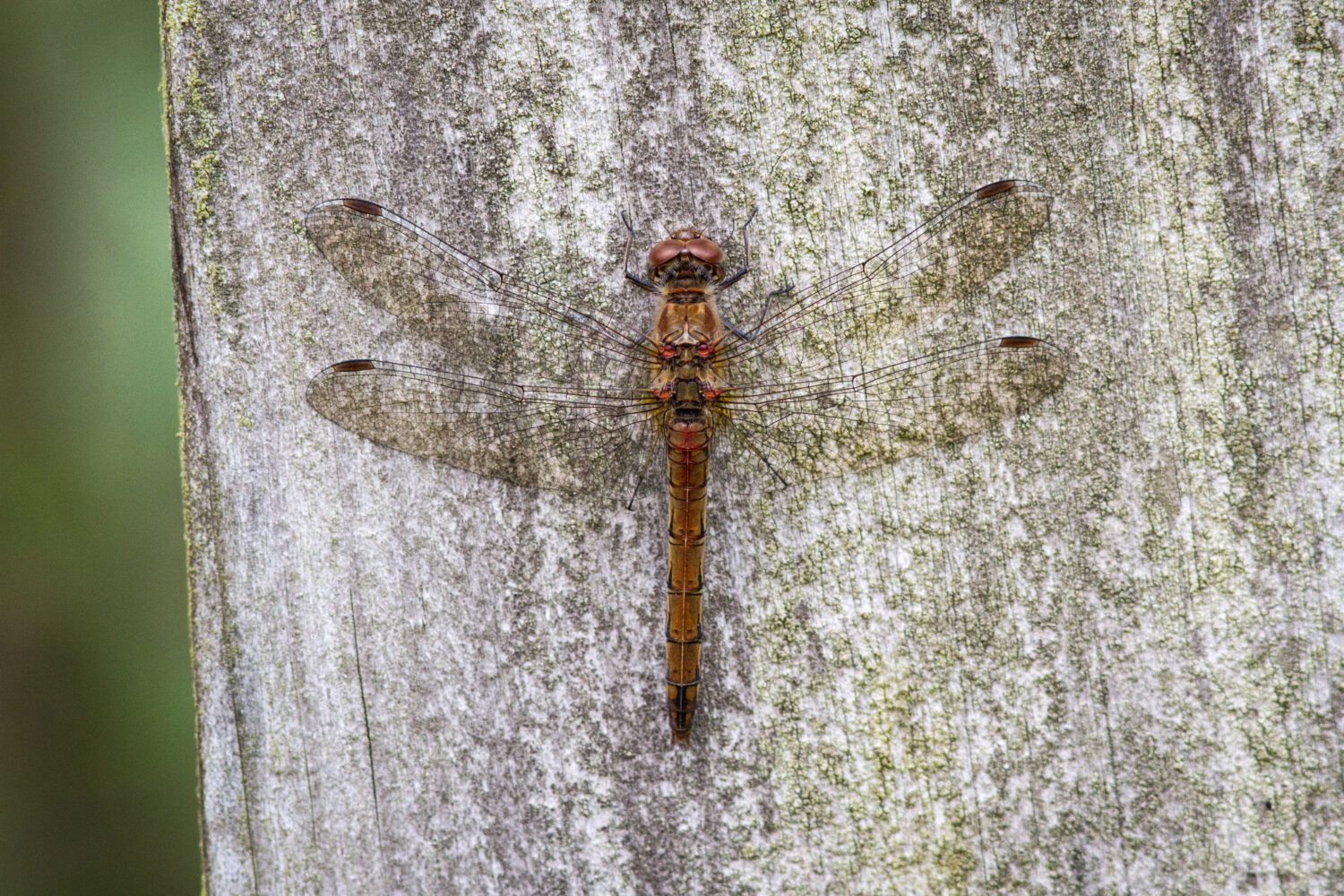
Ruddy Darter
Ruddy Darters are much less common than Common Darters in the reserve but we see a few each year. Both sexes have black legs and males are blood red with a red “face”. This is a male.
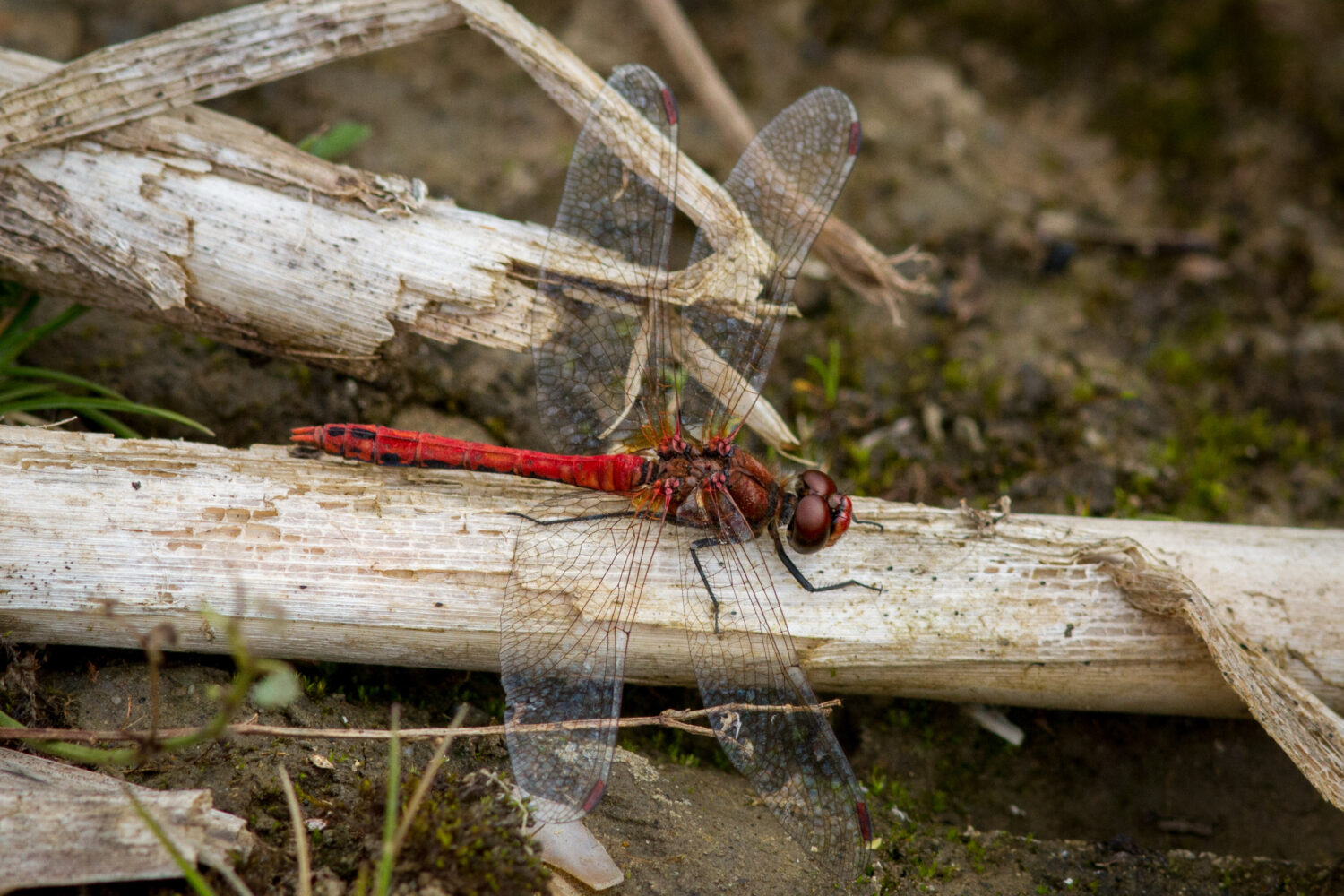
Black Darter
The smallest British dragonfly, this was first recorded in 2018 by David Raffle and a few males have been seen each year since. This is typically found on upland acidic still waters so the ones we see are probably dispersing or migrating. Records of females are rare and there is no evidence that black darters breed in the reserve. This is a male.
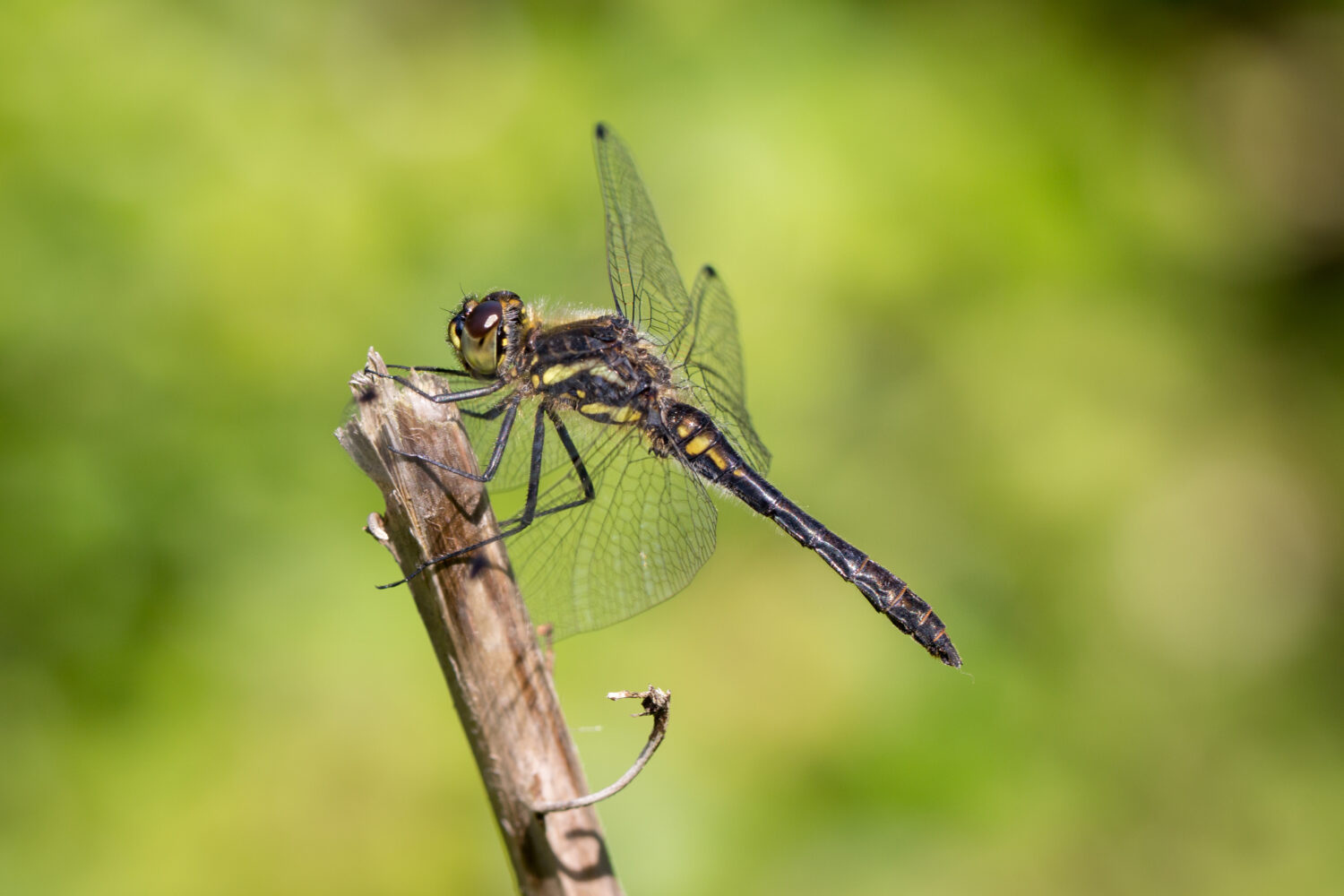
Damselflies
There are still a few Common Blue and Blue-tailed Damselflies around in August but the most numerous is the Emerald Damselfly.
Emerald Damselfly
Unlike most other damselflies, Emerald Damselflies rest with their wings outstretched. The male is metallic green, ageing to bronze, with powder blue at both ends of the abdomen and on the sides of the thorax.
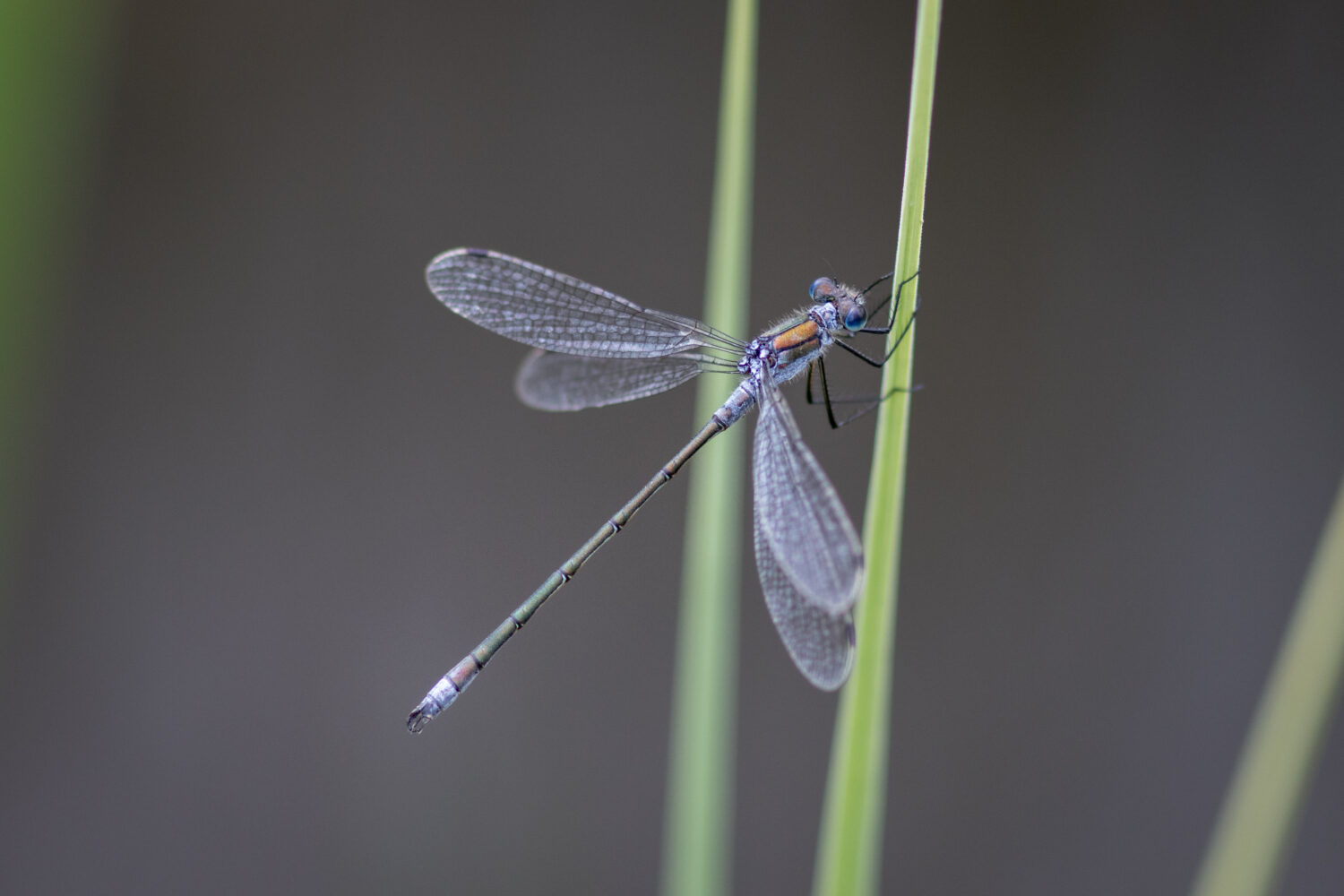
The female is green and gold with a noticeably thicker abdomen.
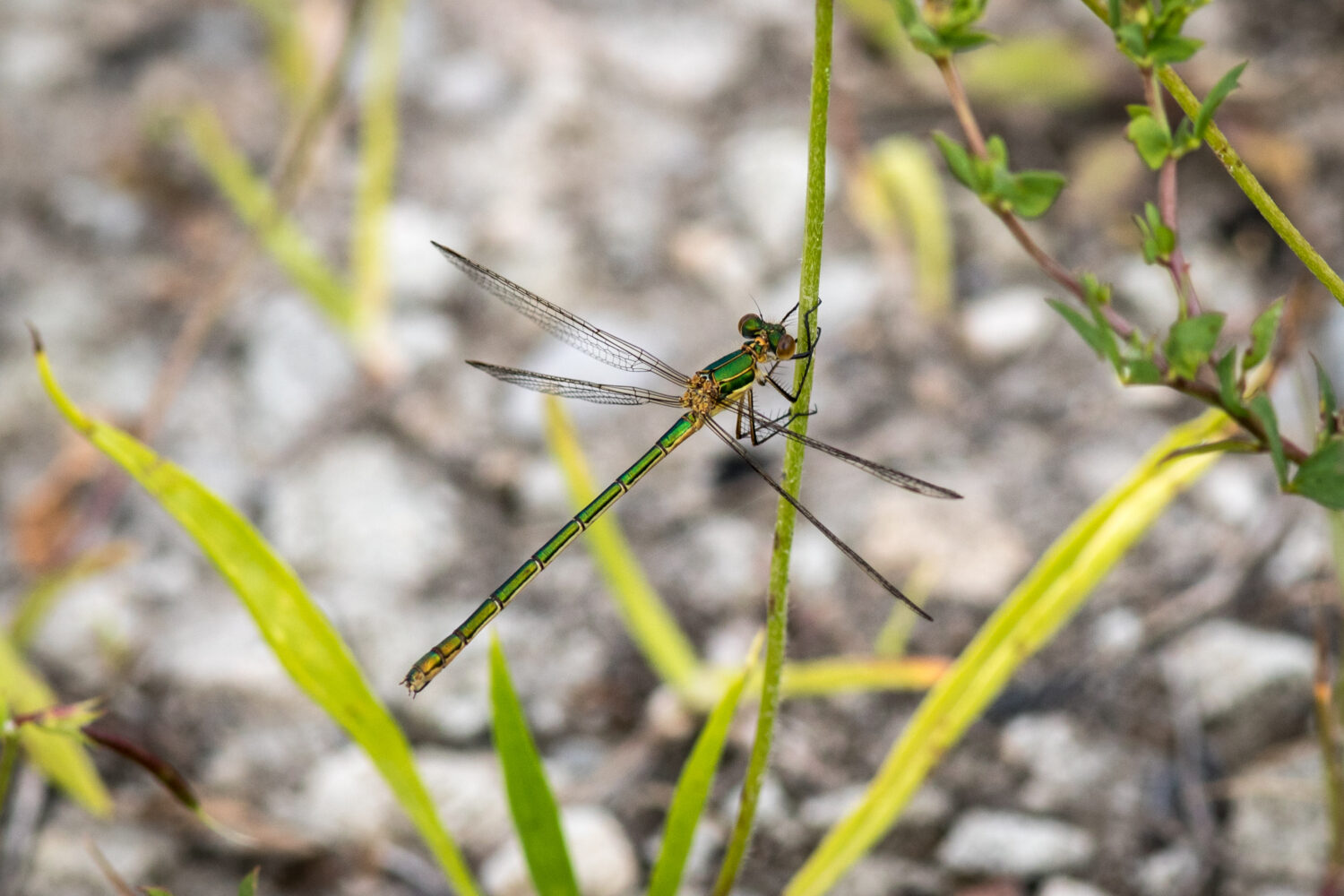
Willow Emerald Damselfly
Willow Emerald Damselflies first arrived in the UK in 2007 and have spread across the country since then. Our only record was of a male by Philip Jordan in October 2022 (his photo below) but it is likely to become established here. It is longer and thinner than an Emerald Damselfly with pale wing spots. If you see one take a photo and be sure to report it to the Gosforth Wide Web.
